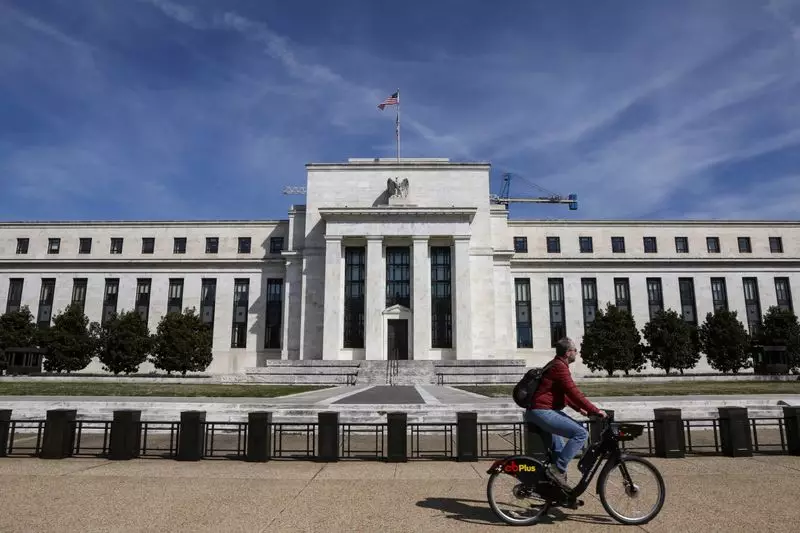The Federal Reserve’s recent deliberations shed light on the intricate balance of monetary policy in a changing economic landscape. As the U.S. central bank navigates relatively muted inflation and a robust labor market, significant questions loom over the effectiveness and strategy of interest-rate adjustments. This article delves into the positions of Fed policymakers and explores the implications of their statements in light of the evolving economic context.
In 2024, the Federal Reserve enacted rate cuts totaling a full percentage point, a decisive response to a complex tapestry of economic factors. However, projections from central bankers indicate a more restrained approach for 2025, with anticipated cuts less aggressive than in the previous year. This moderation can be largely attributed to lagging progress toward the Fed’s cherished goal of a 2% inflation rate and various uncertainties under President Trump’s impending second term, which may challenge existing economic stability.
The labor market remains resilient, presenting a paradox for the Fed. While low unemployment often correlates with inflationary pressures, the current environment has proven to be more intricate. The central bank’s hesitance stems from a combination of factors, including unclear effects of forthcoming economic policies, such as potential tax changes and tariff implementations. Indeed, anticipation of these shifts has led to a state of flux in monetary policy discussions, prompting some Fed officials to advocate for a more cautious approach.
Doves vs. Hawks: The Dichotomy of Views
Fed policymakers can broadly be categorized as “doves” or “hawks,” a dichotomy that encapsulates their respective monetary policy leanings. Doves, preoccupied with maintaining labor market health, might push for quicker rate cuts amid signals of economic malaise. In contrast, hawks are wary of inflation and often advocate for temperance in monetary easing.
Recent comments from a variety of Fed officials underscore this divide. Dovish members such as Governor Lisa Cook and President Austan Goolsbee from the Chicago Fed emphasize an obligation to stimulate the economy without compromising labor conditions. Cook expresses a belief in the potential to make further cuts, while Goolsbee acknowledges lingering inflation concerns yet advocates a gradual approach to adjustments. Their comments indicate an acute awareness of the balance required to support the economy without triggering unwanted inflation.
Hawkish perspectives, however, resonate within the remarks of others like Governor Christopher Waller and Kansas City Fed President Jeffrey Schmid. Waller underscores his belief in the Fed’s ability to rein in inflation moving toward the 2% goal, suggesting that patience is required but further cuts remain plausible. Schmid’s assertions reflect similar caution as he observes a lack of overheating signs in the economy, arguing the importance of monitoring data trends while pacing monetary policy adjustments.
The nuanced positions held by various Fed officials reveal the ongoing evolution of their monetary policy perspectives. As recent data points present a more opaque view of the economy, these officials may recalibrate their approaches based on new information.
Permanent voting members of the Federal Open Market Committee (FOMC) carry particularly influential roles, setting the agenda for monetary policymaking. The rotating nature of the regional Fed presidents’ votes adds additional layers of complexity, leading to variability in sentiment based on regional economic conditions. This governance structure means that both hawks and doves have opportunities to shape policy discussions, and the state of the economy could sway perspectives rapidly.
As documented in the Fed’s comments, market watchers are kept on their toes; unexpected shifts in economic data or policy signals from the administration could influence the balance between doves and hawks significantly. With Fed officials expressing caution amid their assessments, the central bank’s trajectory will require finesse as it navigates toward its dual mandate of price stability and maximum employment.
The Federal Reserve’s approach to monetary policy in 2025 promises to be even more consequential than in the past. With a delicate balance between fostering economic growth and managing inflation, policymakers face the challenge of aligning their decisions with their overarching objectives. The divergence in perspectives among doves and hawks regarding rate cuts signals a potentially tumultuous yet critical time for the Fed, as it navigates both domestic economic conditions and external policy uncertainties.
As the nation anticipates policy adjustments in the new year, the conversations within the Federal Reserve will increasingly embody the trade-offs inherent in steering the economy. Ultimately, the decisions made by these policymakers will shape the financial landscape for years to come, making it imperative for them to act judiciously in response to the evolving economic climate.

